
How can businesses be more environmentally friendly?
How can businesses be more sustainable and environmentally friendly? Sustainable Businesses Contents What is Sustainability in business? How did this company become a certified carbon-neutral
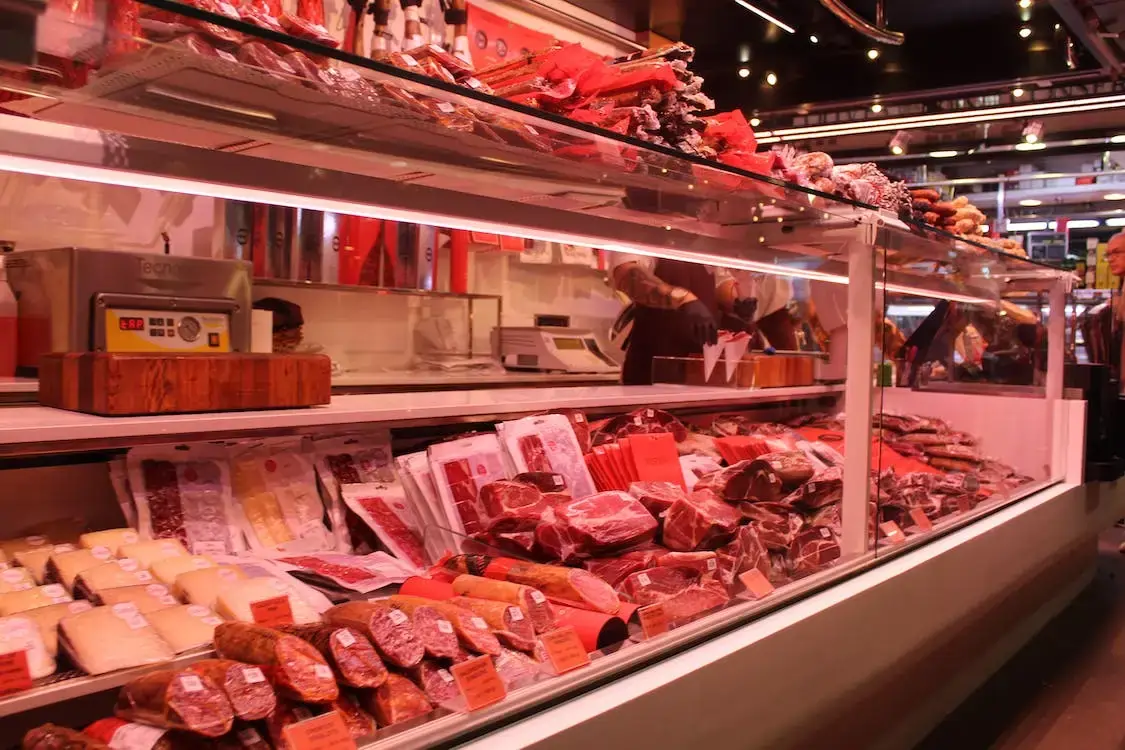
The debate of whether going vegan for the environment is better has been going on for years now. Even though both the vegan and the meat industries have a very loyal community base, it is important that we talk about which one has a lasting impression on the environment. The meat industry, which has been operating in its full force, has various impacts on the environment. these impacts have been researched by various scientists to reveal how the meat industry pollutes the ecosystem.
Going vegan or not is a personal choice. However, as mindful and aware citizens, we need to be aware of what is happening around us.

Yes, we’re talking about meat consumption. Could you trace back your older generations to point out the start of meat consumption? Possibly not, because according to researchers, the first humans likely ate meat some 2.6 million years ago!
The above research was done by studying the teeth of human ancestors known as hominins and the cut marks on the bones of large herbivores.
The earliest hominins apparently had an omnivorous diet that included significant amounts of fruits, seeds, nuts, flowers, insects and meat, comparable to the present chimpanzee diet(source). A notable growth in this diet began to take place at least 2.6 million years ago when some hominins started consuming flesh and marrow from small to extremely large animals.
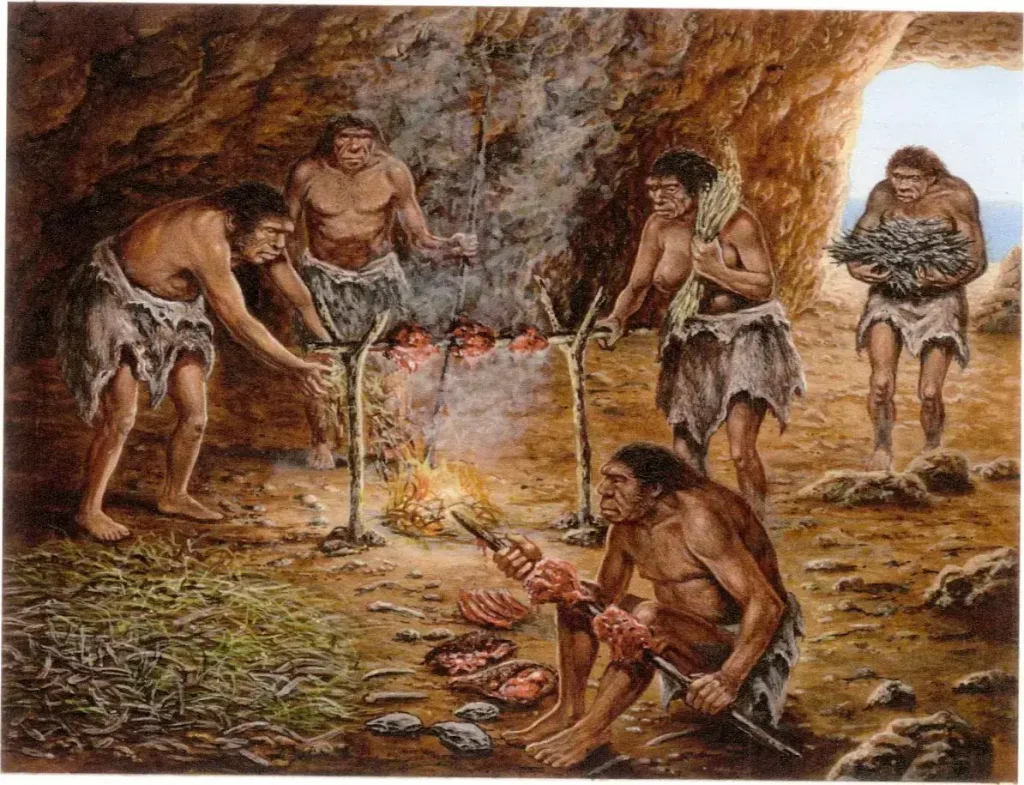
Being meat eaters did help in evolution. The energy-dense protein source is believed to have been crucial to our evolution. The large amount of energy needed by our modern brains has led some researchers to hypothesize that meat consumption may have contributed to the expansion (increase in brain size) and complexity of our brains.
According to a 2018 global poll by market research expert Ipsos, 73% of people worldwide routinely consume both animal and non-animal products.
One of the food industry’s worst polluters is the meat business. Meat is one of the dietary items with a substantial environmental effect. This is also because animals are inefficient at converting feed to meat. The graph below explores how, of all the food industry subsectors, the meat and grain/oilseed milling facilities have contributed the most releases.

But what is causing the meat industry to cause this damage to the environment
Researches have pointed out that the meat industry has an impact on the environment in three ways: by consuming natural resources (primarily water and energy). Secondly, by polluting the environment with different kinds of waste and wastewater discharge. And finally, climate change in terms of potential global warming, acidification, and eutrophication. Let’s look at these in detail.
Before going to the primary sources of pollution in the industry, let’s first discuss how the environmental impact of the meat industry is quantified.
According to European and UN documents, the primary environmental performance indicators in meat production are:
To measure the impact of the above-mentioned outputs, LCA is used. LCA is a method for the environment called life cycle assessment (LCA) that takes greenhouse gases (GHG) into account at every stage of food and agricultural production.
The goal of life cycle assessment (LCA), a systematic tool, is to evaluate any potential environmental effects that could arise from the production, use, and disposal of a good or service throughout the course of its entire life cycle. (Source)

Global warming potential, acidification, eutrophication, and resource consumption are the main effects of the meat chain on the more than fifteen distinct environmental indicators created in the LCA.
Compared to slaughterhouses and meat processing facilities, farms have been proven to have higher environmental impacts.
The most important environmental problems include the possibility of eutrophication and acidification, as well as the usage of natural resources like water and energy. Methane, nitrous oxide, and carbon dioxide emissions from manure are all significant problems. (source)
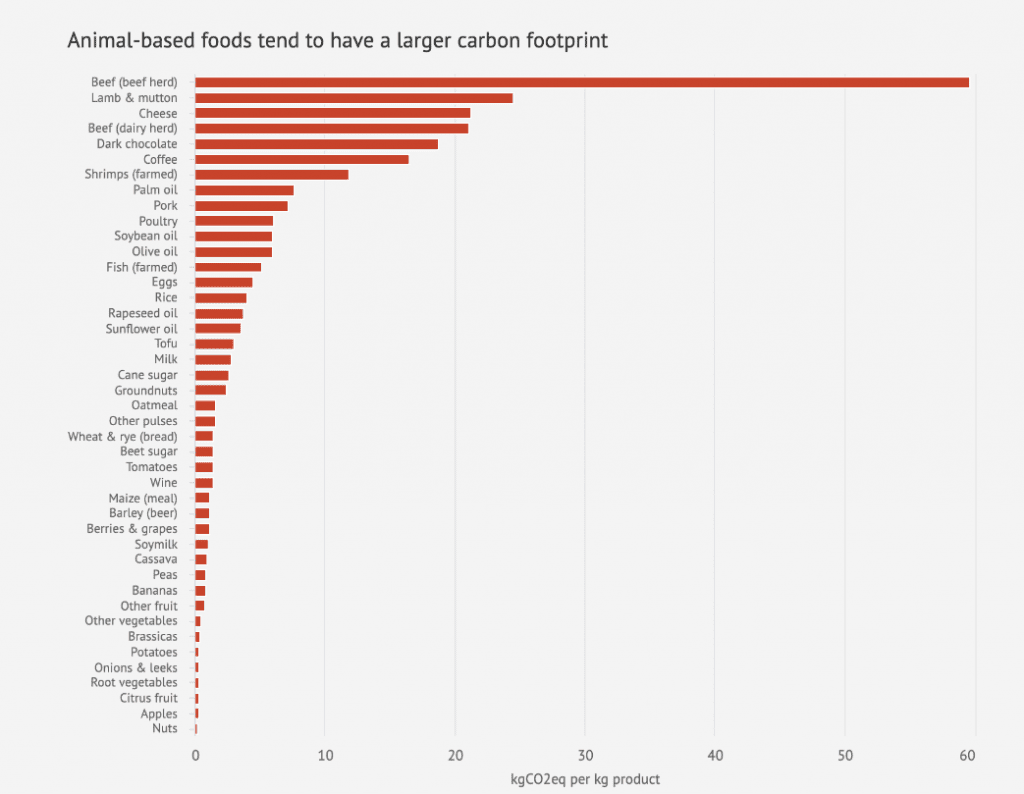
According to researches, the meat and dairy industries contribute around 14.5% of the world’s greenhouse gas emissions, according to the Food and Agricultural Organization of the UN.
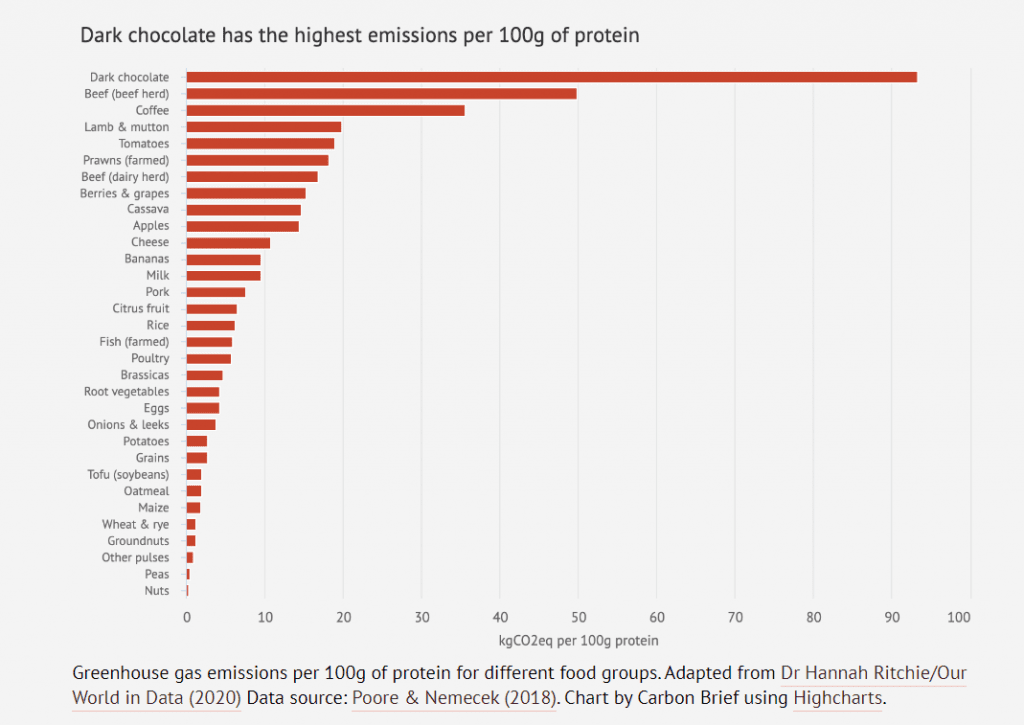
Due to the greenhouse effect, this poses the issue of a faster rise in global temperatures. Livestock manure, particularly methane, is the main source of greenhouse gas production. Methane has 86 times the global warming potential of CO2 over a 20-year period, making it significantly more harmful than CO2.
Broilers, laying hens, and, to a lesser extent, pigs have the most significant impacts on emissions connected to feed production. Enteric methane production from dairy calves contributes significantly to overall GHG emissions. (source)
Throughout the production of meat, a lot of energy is used. This energy is used to regulate temperature regimes, i.e. heat treatments like boiling, cooking, pasteurising, sterilising, drying, and smoking, as well as cooling (mostly chilling and freezing). Apart from this, another chunk of energy is utilized for transportation.
Have a look at the energy consumed by a meat plant on a typical day.

In the meat industry, there are two main categories of solid waste:
Apart from this, the waste generated by livestock is another major contributor to the depleting environment, producing 1.4 billion pounds of waste per year.
The wastewater which is generated is another source of damage. The strength and grease and nitrogen, phosphate, and nitrate concentrations of sewage from the meat sector are five to ten times more than those from a typical household. Concentrations of grease, nitrate, and phosphorus in our sewage systems seep into the ground and harm the land, while also causing water bodies to become more acidic.

The destruction of South American forests is connected, both directly and indirectly, to the production of meat. The WWF claims that the production of beef and soy is to blame for the destruction of the Amazon Rainforest and other regions of Brazil, Argentina, and Paraguay.
Did you know? Just behind Australia, which consumes 198.87 pounds of meat per capita year, the United States consumes 198.51 pounds of meat annually. The United States, which has a population of 319 million, consumes more meat than any other country in the globe.
The Netherlands’ Wageningen Livestock Research’s latest study reveals that breeding can minimize the environmental effect of animal products by roughly 1% annually trying to have a smaller environmental impact.
How does breeding reduces the environmental impact?
By concentrating on feed conversion, this is mostly accomplished. Feed efficiency is primarily determined by feed conversion. Improved feed efficiency can reduce nitrogen and phosphate output, which is ultimately better for the environment.
Breeding organisations work to improve feed efficiency since doing so lowers the release of minerals (N, P) into the environment.
However, global ecological and geopolitical variables will have an impact, especially over a longer period of time. For instance, increased transportation and energy costs may encourage production near the point of consumption. Click here to know more about how breeding can be helpful.
Between 1965 and 2010, the amount of chicken produced in the United States increased more than five-fold, reaching more than 50 million pounds of LW poultry (USDA NASS, 2016).
Sustainability for the chicken industry is maintaining and fighting for the humane treatment of the most valuable asset: hens. It also entails being good stewards of land, water, and feed management.
The chicken industry has been successful in considerably reducing the consumption of water, farmland, electricity, greenhouse gases, and other priceless resources via continuous innovation and by guaranteeing the healthiest possible birds. (source)
Did you know? Nowadays, it takes 50% less energy to produce the same amount of chicken than it did in 1965.
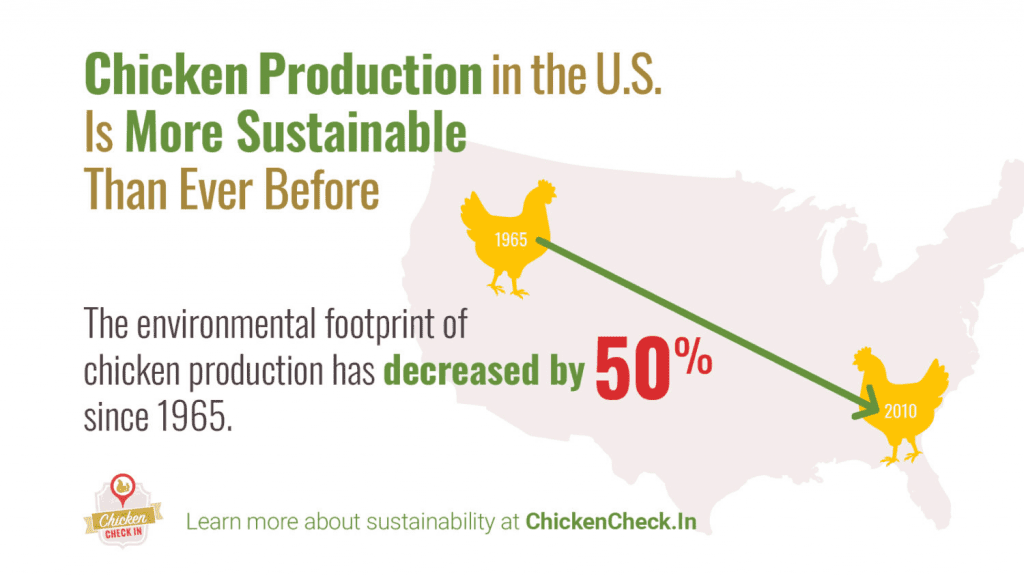
This is because the water use of the chicken industry has decreased by 58% since 1965. Hens from 2010 had a lower mortality rate and produced more viable eggs than their counterparts from 1965, which dispersed their impact among more young chicks and lessened the overall environmental cost from that generation. (source)
The establishment and execution of national livestock development strategies, particularly with regard to animal breeding and reproduction, were heavily influenced by the public sector in many developed nations.
According to Mishra et al., although crossbreeding in India of unremarkable animals with foreign genetics boosted production and reproduction capability, it also resulted in breed dilution of priceless native livestock.
According to FAO, the two main causes of the depletion of regional genetic resources are the usage of exotic breeds and careless crossbreeding.
Effective policy has been and will continue to be crucial in efforts around the world to achieve sustainable development, including in the livestock sector. For example, an official policy of the Indian government in 1969 allowed marginal and small farmers to participate in the dairy industry, increasing milk production by 100–150% and farmer income by 200%–400%.
Click here to read more about the policy issues and stakeholder requirements in the Indian meat sector.
Have a look at the products and services available near you
According to the 2020 IPCC assessment, widespread veganism might prevent 8–16 gigatons of greenhouse gas (GHG) emissions annually.
According to the authors of Climate Change 2022, research shows that switching to plant-based diets rich in pulses, nuts, fruits, and vegetables might significantly reduce greenhouse gas emissions compared to the present dietary habits in the majority of industrialized countries.
Putting food systems at the forefront of the fight against climate disaster, The Plant Treaty was created as a companion to the UNFCCC/Paris Agreement. The Plant Treaty aims to stop the extensive destruction of vital ecosystems brought on by animal agriculture and to promote a shift to more nutritious, long-term plant-based diets.
Even after getting so much attention from the government and policymakers, veganism still remains a personal choice. As we mentioned in the beginning, meat-eating began a long time ago and putting it to stop is not possible realistically. However, if you’re an aware citizen who is concerned about the environment, then reading about how veganism can stop the degradation of the environment is a good first step.

Source: Angelina Frankowska et al., Nature Food, 2020): The total climate impact (in kg CO2e per kg of food cooked)
If you’re still wondering about how is it impossible for you to cut meat out of your diets, we completely get you. The answer to this would be to know your meats. Yes, substituting meat for meats with lower footprints also is one step forward.
A possibly healthier and more effective substitute for traditional meat is being created, and it is known as cultured meat (i.e., meat made in vitro utilising tissue engineering techniques). Muscle cell growth was considered to be fuelled by cyanobacteria hydrolysate, which serves as both a food and an energy source.
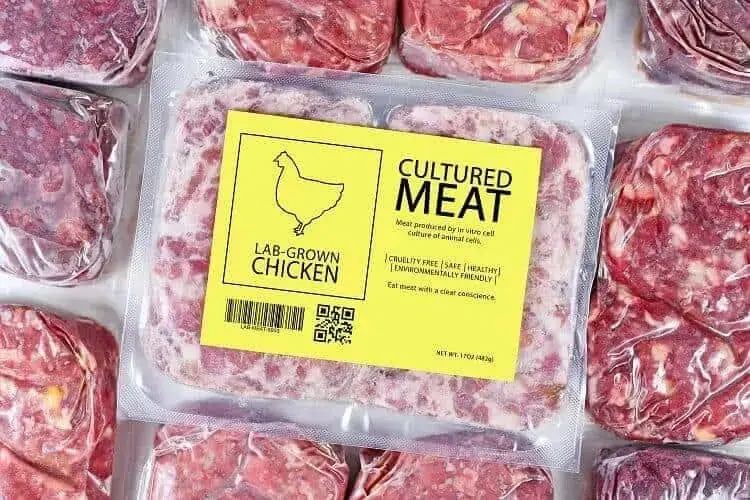
Depending on the product examined, cultured meat uses between 7 and 45 per cent less energy (only poultry uses less energy), emits between 78 and 96 per cent less greenhouse gases, occupies 99% less land, and uses between 82 and 96 per cent less water than conventionally produced European meat. (source)
Use of insects as the primary source of protein for both humans and animals is one corrective measure to lessen the resources needed to grow livestock and satisfy dietary needs.
Researchers also feel that the pressure of going vegan is higher on high-income countries. However, to be environmentally friendly, one only needs to be aware and make significant changes in how and what one consume.
Agriculturists need to be aware of how their practices can impact the environment on a macro level. New inventions can be taxing, but making simple changes like not wasting food also creates an impact on the environment.

If you’re looking to know more about the impact of the meat industry on the planet, then have a look at these documentaries: Seaspiracy, Cowspiracy, Food inc, The game changers and What the health.
By changing their beliefs and attitudes toward their eating habits, people have the power to lessen environmental damage. Hence, being aware and making the needful changes is the requirement of today. We hope this research-based blog helped to broaden your views and help you get one step closer to sustainability.
Blog disclaimer: This is a research-based blog. All content provided in this blog is for informational purposes only and not intended to hurt any sentiments, personal choices, group or belief.

How can businesses be more sustainable and environmentally friendly? Sustainable Businesses Contents What is Sustainability in business? How did this company become a certified carbon-neutral

Electric Car Conversations: The good and the challenges Contents Eclectic or Dogmatic Current state of EV Market Why EV over Traditional Automobiles What’s new in the
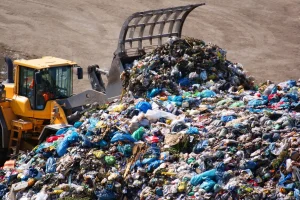
Revolutionising Waste Management: Producing Green Energy through Waste Contents Environment and Economy Maximizing economic growth Tracking Denmark’s progress so far Danish-India partnership for green growth